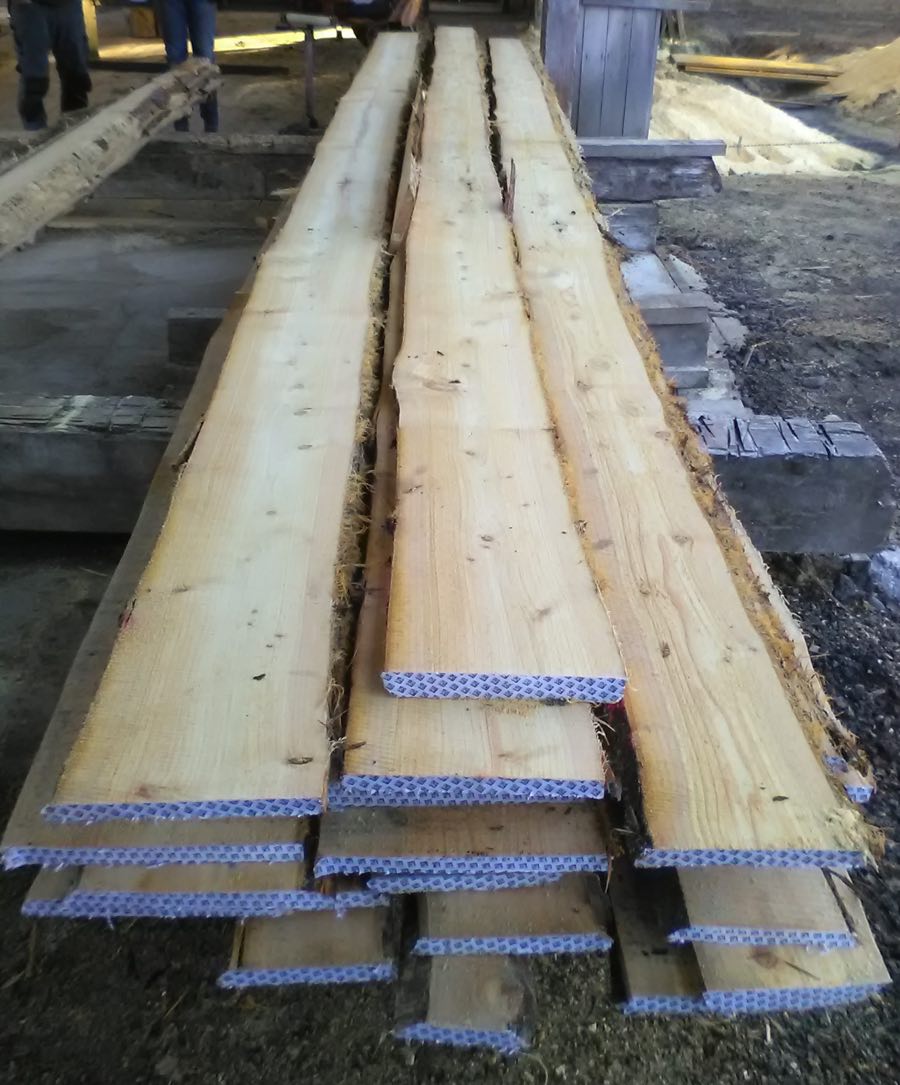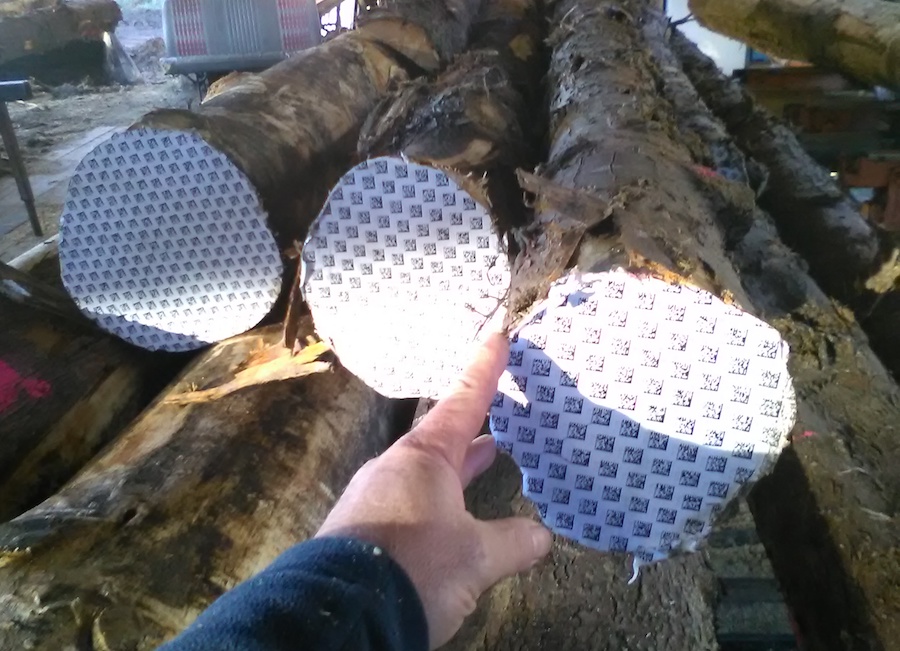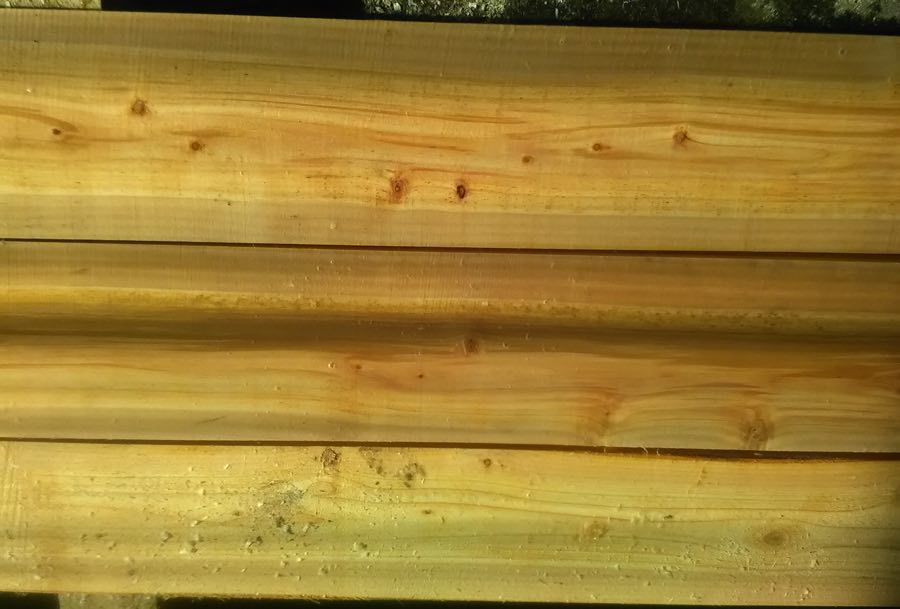
This is free.
22 year old untended Cypress shows promise
Dean Satchell, New Zealand Tree Grower August 2021.
Cypress plantations have traditionally been pruned and thinned to produce the "holy grail" of appearance products, clearwood lumber. Surprisingly, there is general consensus on how to produce cypress clearwood - regular timely pruning should minimise diameter over stubs and the trees must be thinned on time to a low stocking, so that residual crop trees grow large and yield a high volume of clear heartwood. Harvest might be in 35-40 years.
However, pitfalls abound with growing plantation cypress. Many growers don't get it right by pruning late, thinning late or not thinning at all. Even if the grower gets it right, questions remain around whether the wood is valuable enough to justify the long rotation length and low annualised volumes.
The value proposition
What is liked and appreciated by the market is the warm colour and decorative appearance of cypress timber. No question, cypress is a lovely timber, but do we know how to grow cypress to maximise returns? Profit, of course, is not the key driver for all growers, but for an industry there needs to be enough of us with that drive.
Any forest economist will tell you that the key ingredients for profitable timber plantations are a short rotation, good volume yields and high grade recoveries of valuable sawn timber. Unfortunately short rotations are not very compatible with heartwood production, and although sap/heart interior panelling timber can hold some value, this product alone would hardly lead an emerging industry to greatness.

Bandsawn slabs waiting to be edged
Natural durability of the heartwood is a traditional strength of cypress as a specialty softwood. However, recent research under the Specialty Wood Products Partnership (SWP) banner demonstrated that thermal modification of cypress sapwood produced an impressive durability performance. Thermal modification involves only heat, with no chemical preservatives necessary. Thermal modification also enhances dimensional stability, an already strong feature of cypress timber.
This result offered an opportunity to evaluate grade recoveries from young cypress for high-value exterior applications such as cladding, normally reserved for heartwood.
This research
The 22 year-old block of cypress used for the sawmilling study were part of a Scion clonal research project planted by Timberlands at Rotoehu forest near Rotorua. These trees were planted at 800 stems per hectare and were neither pruned nor thinned. Fourteen trees were harvested and these yielded either two or three six-metre logs. The average log small end diameter (SED) was 233 mm, which definitely didn't impress the sawyer when the ten tonnes of skinny logs arrived at Vaughan Kearns Ruapehu Sawmills for milling.

Log ends barcoded to track board data
Boards were gradesawn to target cladding and appearance products, using an innovative sawmilling technique developed for small diameter softwood logs. The timber was slow air dried, then grade recoveries were measured. Scion gathered the data and produced a report for the Specialty Wood Products Partnership (SWP), available on the NZFFA website.
Results
Sawn timber recoveries were 58% of the total log volume. Appearance and cladding grade recoveries were 90% of the sawn timber. Sawing costs were estimated to be $350 per sawn cubic metre, high for softwood milling but to be expected for logs of this diameter. Because the timber from young unpruned trees had very few large knots and bark-encased knots that degrade timber, almost all of the timber was of dressing and cladding grades suitable for high-value applications. Alternatively, by grading for structural applications (No. 1 framing grade), recoveries were even higher at over 95% of sawn timber.

Typical grain on freshly sawn study timber
Conclusions
This study tested the commercial potential of growing short rotation cypress to target high value applications such as appearance structural (e.g. exposed rafters) and exterior cladding, that take advantage of the qualities of cypress timber.
Taking into account processing costs including thermal modification, this study suggests that growing and processing cypress should be profitable for producing weatherboards based on short rotations of unpruned trees, provided the commercial scale thermal modification process does not seriously degrade the timber.
These results could no doubt be improved in a commercial setting and scale and although there is some way to go before a short rotation cypress industry is born, this study offers growers improved confidence in cypress as a profitable plantation species, provided productivity is good and disease is beaten. Clonal cypress resolves these two issues and the Cypress Development Group will have elite clones available for deployment shortly. The next research steps are underway, to thermally modify a commercial volume of cypress timber and assess its performance in real-world applications.

 Farm Forestry New Zealand
Farm Forestry New Zealand